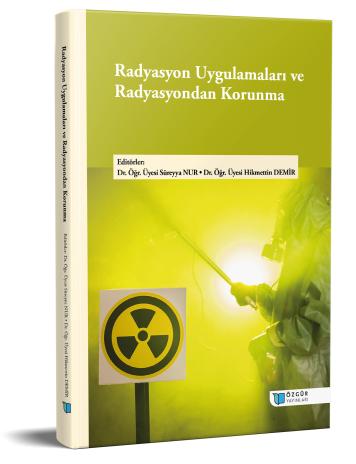
Computed Tomography
Chapter from the book:
Nur,
S.
&
Demir,
H.
(eds.)
2024.
Radiation Applications and Radiation Protection.
Synopsis
Computed Tomography (CT) is an advanced medical imaging technique that uses x-rays to obtain cross-sectional images of the internal structures of the body. CT devices operate on the principle that different tissue types absorb x-rays at varying rates as the high-energy x-ray beams pass through the body. These absorption differences are detected by sensors and converted into digital data, which is then processed by a computer. CT's ability to provide detailed imaging plays a critical role in numerous clinical applications, particularly in oncology, trauma, cardiovascular diseases, and neurology. Over time, CT technology has evolved, resulting in devices capable of faster and higher-resolution scans.
Another significant advancement in CT technology is the integration of artificial intelligence (AI)-supported imaging and reconstruction techniques. AI can reduce noise in the image processing stage, enabling high-resolution images even in low-dose scans. This not only minimizes the radiation exposure for patients but also enhances diagnostic accuracy. AI algorithms contribute significantly to clinical applications such as tumor detection, anomaly classification, organ segmentation, and rapid imaging. AI-assisted reconstruction techniques, unlike traditional methods, utilize iterative algorithms to optimize image quality, delivering more precise and reliable results.
One of the key advantages of CT is its ability to provide reliable results across a wide range of clinical scenarios in a short time. However, the potential risks associated with radiation exposure during CT scans must be considered, and low-dose protocols should be implemented, particularly for pediatric patients, pregnant women, and individuals requiring repeated scans. Ultra-low-dose CT techniques have become possible through the development of advanced detectors and AI-based reconstruction algorithms, significantly reducing radiation exposure while maintaining diagnostic accuracy.
In conclusion, CT has become an indispensable tool in diagnosis, treatment planning, and monitoring processes. With advances in technology, CT devices are now capable of delivering faster, high-resolution images with lower radiation doses. AI-supported innovations and advanced techniques such as spectral CT further accelerate progress in this field, making CT an integral part of modern medicine.

